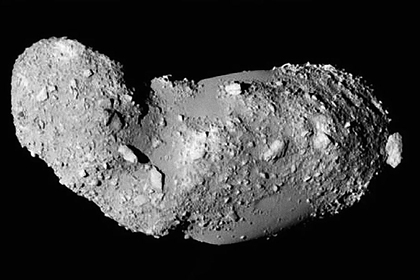
Asteroid Itokawa
In a soil sample from the asteroid (25143) Itokawa, delivered by the Hayabusa probe, traces of water and extraterrestrial organic matter were found. This is reported in an article by an international group of scientists published in the journal Scientific Reports.
Organic matter is represented by nanocrystalline graphite and polycyclic aromatic hydrocarbons with high ratios of deuterium to hydrogen and nitrogen-15 to nitrogen-14. This eliminates the possibility that it hit the asteroid as a result of the probe fired to obtain the material, and confirms its extraterrestrial origin.
The discovery also indicates that Itokawa formed in the asteroid belt from a pile of intermixing space debris from a previous, larger asteroid. The soil contains water ice with a relatively low deuterium content, which is typical for cosmic bodies from the inner part of the solar system (it includes the terrestrial planets and the asteroid belt itself).
This means that at an early stage of its existence, the asteroid underwent chemical metamorphosis and dehydration of silicates, which led to the appearance of graphite. As a result of a catastrophic process (collision with another cosmic body), silicates collapsed, which completed the metamorphic stage of Itokawa's evolution. The asteroid received exogenous water and primitive organic matter from carbonaceous chondrite, which continued complex chemical interactions on the celestial body.
Itokawa is a near-Earth asteroid whose orbit crosses the orbits of Mars and Earth. Its mass is about 35 million tons, and its maximum diameter is slightly more than half a kilometer. On November 20, 2005, the Japanese spacecraft Hayabusa landed on the asteroid, which then delivered samples of the asteroid's soil to Earth.

